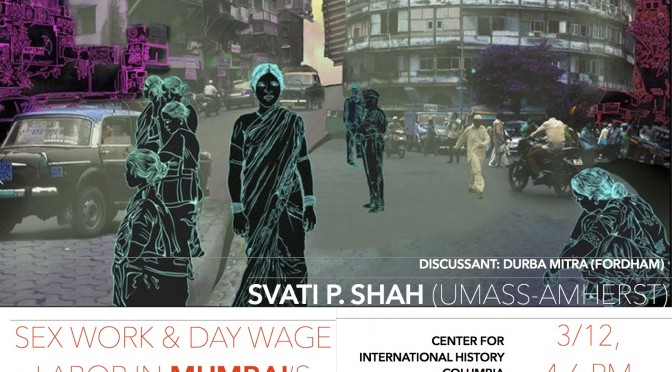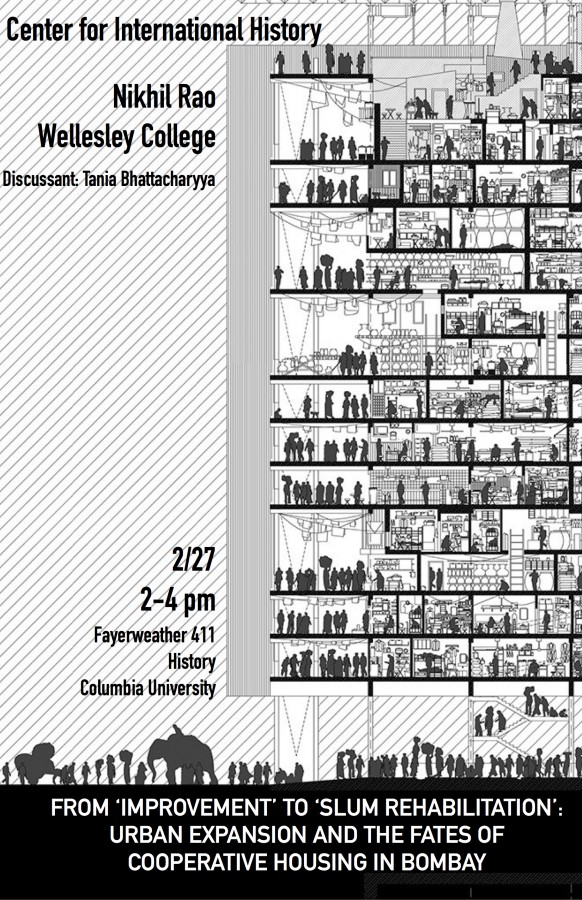Department of History, Columbia University, New York



Professor Rao is a scholar of urban history and urban economic and political development in South Asia. Rao is the author of House, but No Garden: Apartment Living in Bombay’s Suburbs, 1898–1964 (Minnesota, 2012)
*(poster image is detail from UGO Architecture‘s imagined redesign of Dharavi)
March 31, 2014
REMOVER OF OBSTACLES: GANESH AND THE PERSISTENCE OF MYTHOLOGICAL GENRE IN HINDI CINEMA
Abstract: The mythological, the founding genre of Indian cinema, is one of its most innovative forms. In the colonial period, it promoted nationalist ideals while avoiding censorship through its association with religion and tradition. It is usually thought that the mythological genre declined in popularity in Hindi cinema in independent India, eclipsed by the social which foregrounded new ideas of Indianness, a concern which continued through the Bollywood films about the diaspora and the recent flourishing of the biopic. Yet the mythological, ignored by many writers and critics, who saw the massive success of JSM in 1975 as a freak occurrence, has continued as a popular form in Hindi cinema, notably children’s animated films, up to the present, also flourishing in other media ranging from television, to popular English fiction. This paper looks at Hindi mythological films about Ganesh, the Remover of Obstacles, in the wider context of the evolving genre, discussing his changing image while also examining the nature of his gajatva or ‘elephantness’.
Location: Hamilton 303
Time: 10:30am
Speakers: Rachel Dwyer (SOAS)
RSVP on Facebook